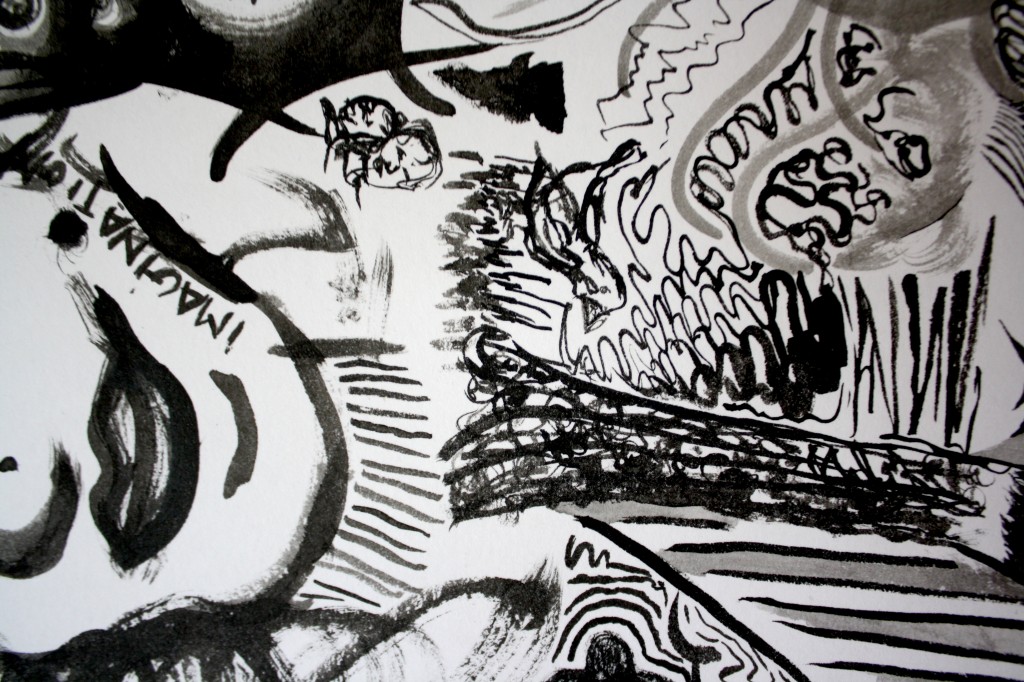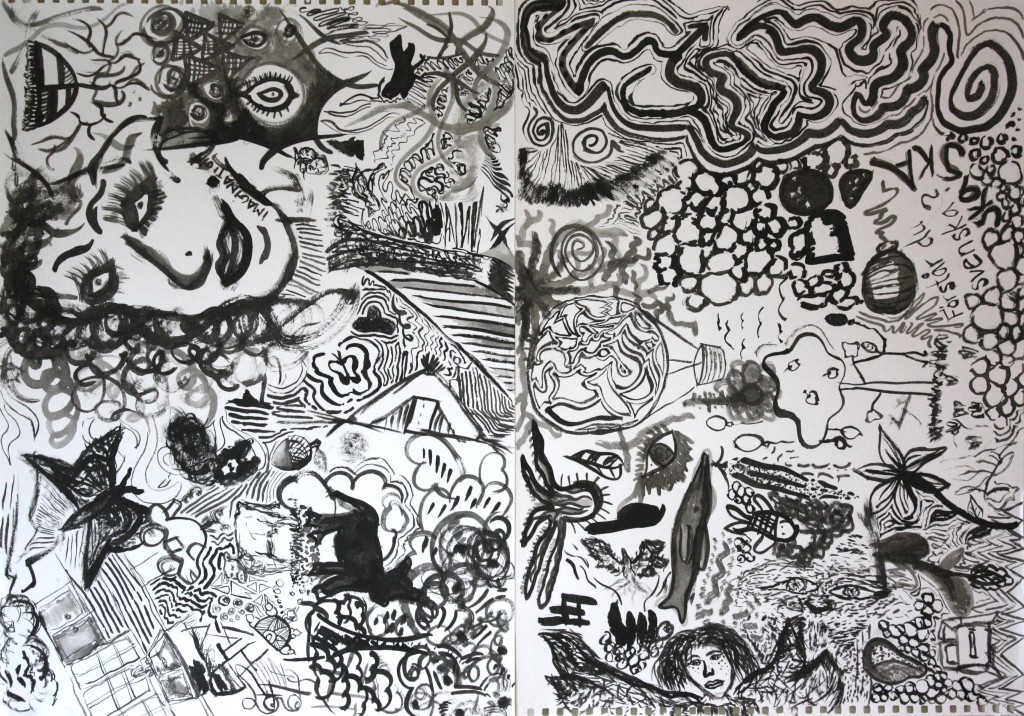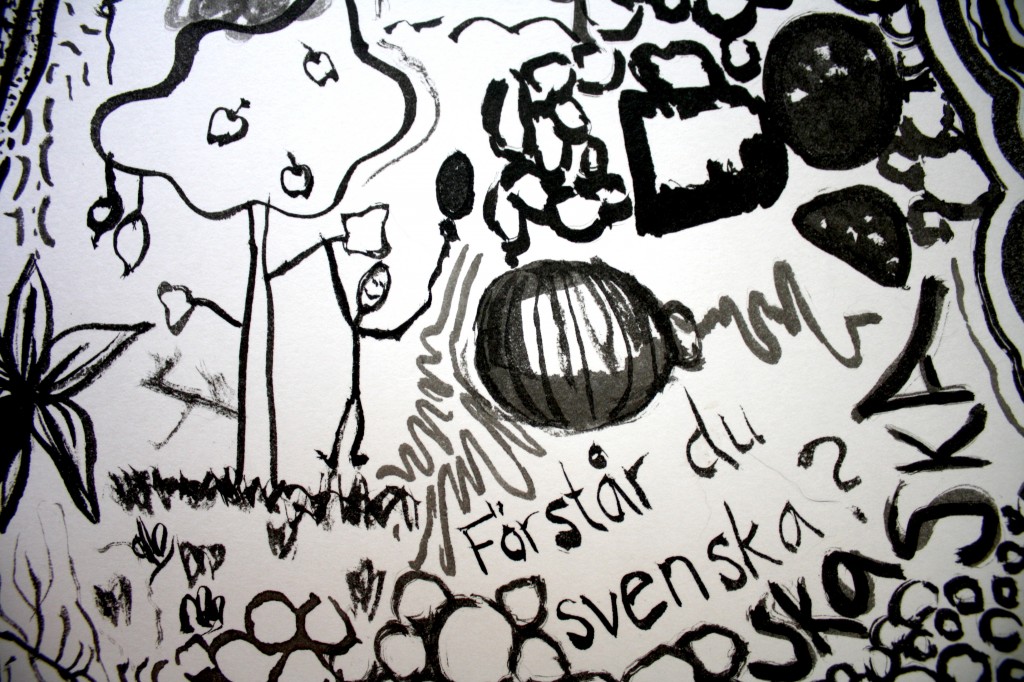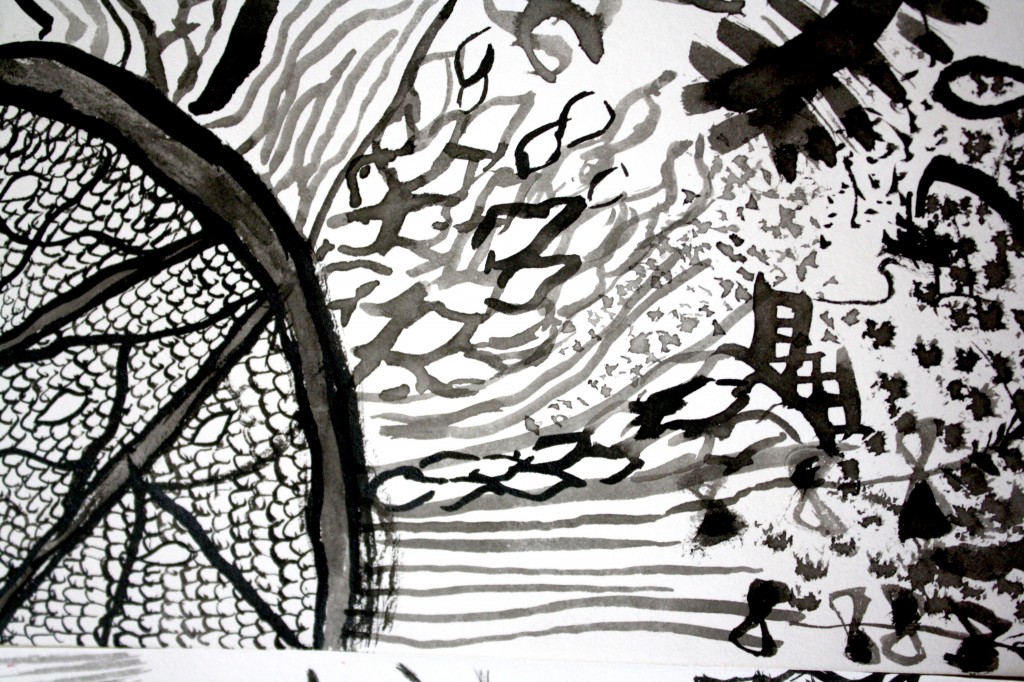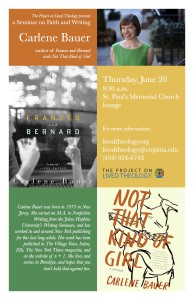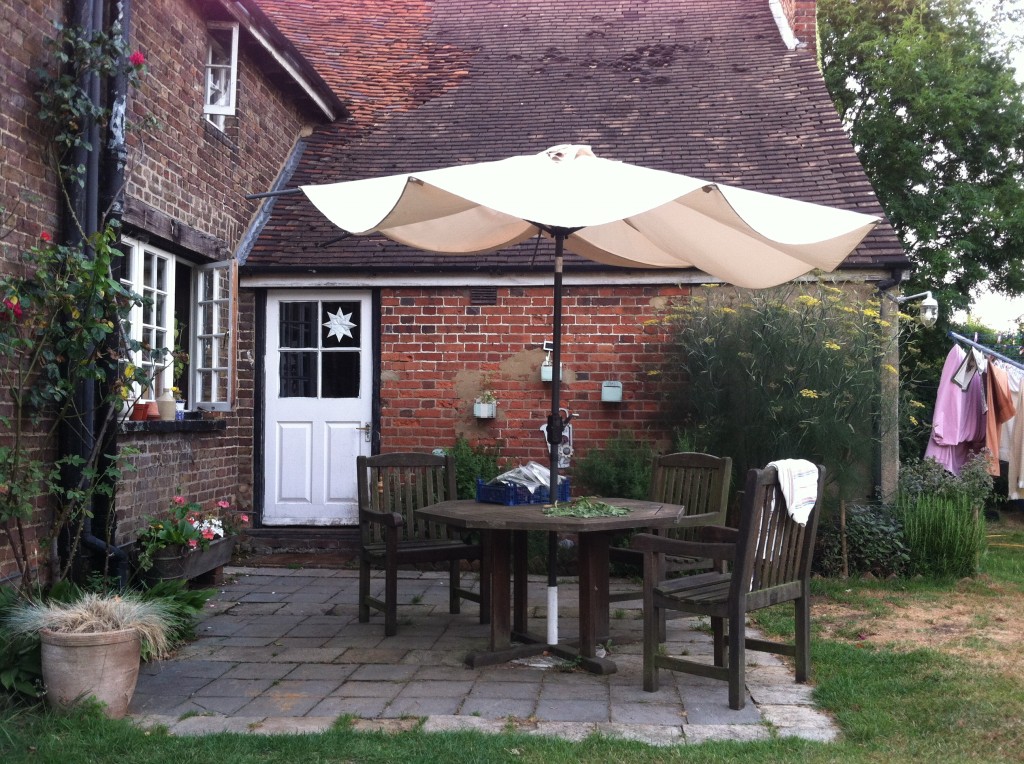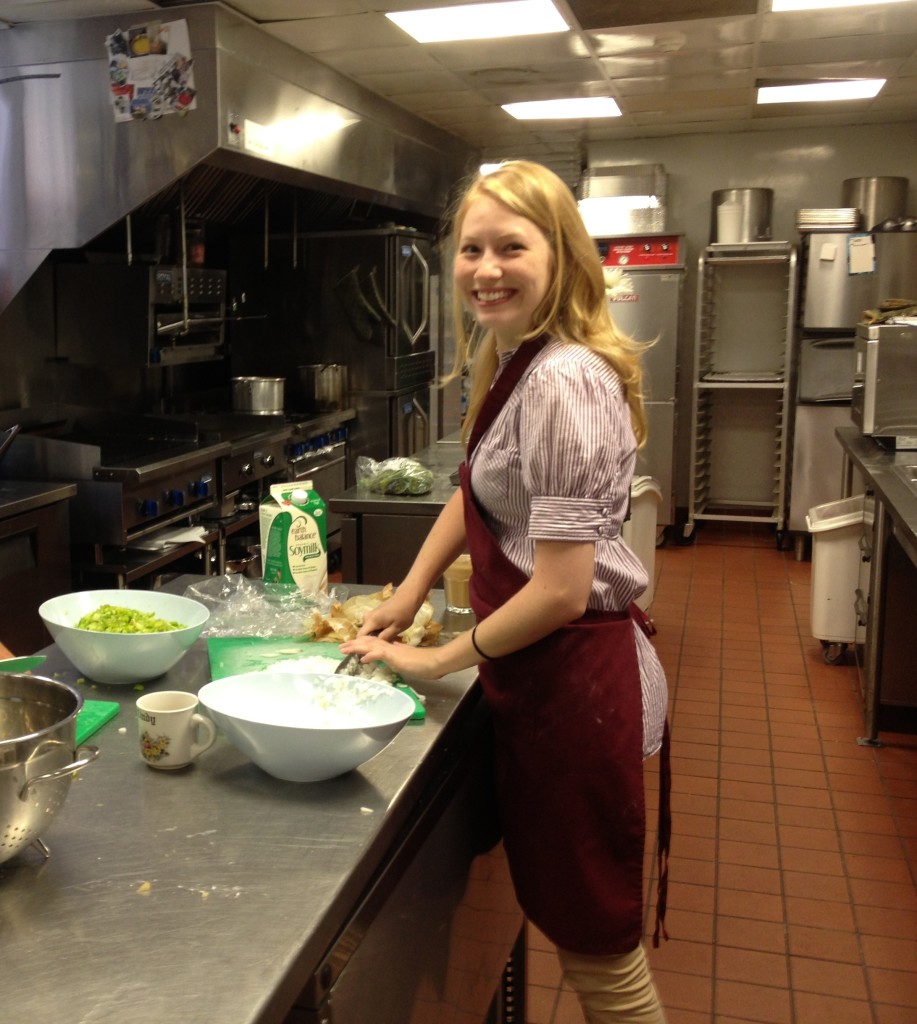Giving “points” to the women for whom we provide accommodation is an uncomfortable action that must be carried out by volunteers at the Catholic Worker Farm. It seems that just when I am encouraged by how well the volunteers and the homeless guests, live, work, and interact together as a community, a woman breaks a house rule and thereby has to receive a point; the consequence of not following a rule. In a strange transition I find I must “discipline” a friend and the difference between our positions in the house is all too clear. The points system is an unfortunate aspect of the community structure but it is necessary in order to reinforce it: a woman receives a point if she fails to adhere to one of her responsibilities, for example, if she cooks when it isn’t her day to make dinner for the house or if she fails to return to the farmhouse to clean according to the schedule.
The points system was implemented at the Catholic Worker Farm fairly recently, only four months ago, and so far it seems to have been working better than when there were no consequences for not adhering to community responsibilities. The women have an opportunity to engage in an act of solidarity with each other on a daily basis, and also both the electrical costs and the activity in the small kitchens are kept to a minimum. Even though community life is improving due to the implementation of these consequences, too many women have been acquiring points more often than any of the volunteers are comfortable with. Once a woman has three points, our policy is that we will ask her to leave.
A discussion in a recent meeting about issuing points led to a discussion about how the points system can be more effective. How will the women understand the gravity of the situation earlier, so that they can continue to keep their accommodation in our houses and not acquire three points? We settled on the idea of banning the women from the house for a period of time, for a week or two in conjunction with giving them a point, to hopefully help them to understand the seriousness of breaking house rules.
The paradox of banning our homeless women from our houses of hospitality struck a chord with me, however. It seemed that the threat of being asked to leave should have been enough; how could we possibly be discussing banning the women, essentially as another way to parent them? “Banning” is a typical policy of a night or day homeless shelter, but we are supposed to be a house of hospitality, a community of love.
Have we diverged from our vision of community, of taking personal responsibility for destitute neighbors, of practicing the works of mercy, since we now find ourselves with a need to instigate a policy of banning women? It was an instance in which I realized the disparity that often exists between a vision and reality. The reality of the community structure can appear harsh because it seems so far from the ideal, but it is also unfortunately necessary and practical in order to run the Catholic Worker Farm. We never intended to have to discipline women, to ask people to leave or to ban them for a period of time, and this disparity between vision and reality is painful for both homeless guests and volunteers.
The reality the Catholic Worker Farm community often confronts in our community meetings is that though we aspire to Dorothy Day’s vision and attempt to imitate the person of Jesus, we can do only that which is within our means. We do not have the means to accommodate women who cannot take personal responsibility for the house in which they live or for their actions. Over the years the community has found they could not accommodate a woman who is schizophrenic, women who could not argue or discuss problems without violently shouting, and women who continually failed to prioritize following the rules that are a requirement for their accommodation.
This disparity between vision and reality, and the resulting tension that occurs when both of these truths are held together, exists not only in measures taken to maintain community structure but also in other aspects of life at the Catholic Worker Farm. Another tension is the aspiration to provide accommodation for as many homeless women as possible, but also the desire to focus intently on the well being of each woman who stays in our houses. Operating within Peter Maurin’s personalist vision, we provide for the needs of homeless women without any governmental aid and also allow some women to remain in our houses for years at a time; for example if their legal cases are rejected and they must submit a new application. Furthermore, we accept women with their children and help them to enroll in school, we check in with case workers and solicitors, take each woman’s history and address medical problems; in a sense, we attempt to get to know them in an intimate way so that we might be able to provide additional help in other areas of their life in addition to the basic necessity of accommodation.
On the other hand, continual telephone calls from agencies such as the Red Cross serve as reminders of the pressing need of accommodation for the homeless in England, the reality of how many women we have space for, and how our efforts to adhere to the personalist approach prohibits us from providing accommodation for more women. Dan McKanan writes in a recently published book, The Catholic Worker After Dorothy: Practicing the Works of Mercy in a New Generation, about the range of Catholic Worker communities, and how most fall within two extremes; those that become professional non-profits in order to accommodate more people and those that stick more faithfully to traditional Catholic Worker ideology of personal responsibility and hospitality.
Not only are women coming and going as they receive the proper legal status, a reality which contributes to a continuously transitory community and seems in tension with the community vision, but also volunteers frequently come and go, most only staying for months at a time. I consider my personal temporality at the Catholic Worker Farm to be a diversion from the ideal community. As a live-in volunteer I have the responsibility of long-term efforts, some of which include making decisions about house policies and investing in the community through relationships with the women, yet I am only a part of the community for three months.
It is reassuring that Dorothy Day wrote not only about her vision but also her failures to bring it to fruition and the tension she experienced when reconciling it to reality. In an article written after the death of Peter Maurin, Day notes that, “not a month passes but some visitor comes to us who asks us gently if we have not given up emphasizing some one or another aspect of Peter’s program,” (1) which consisted of numerous issues including pacifism, unemployment, labor, the works of mercy, the land and agriculture, personal responsibility, and community life amongst other things.
In addition to this she writes that her greatest failure, “the one that Peter would probably emphasize if he were here to talk of these things,” was to “plunge into action without sufficient indoctrination… our vision is not keen enough nor large enough for us to see the whole; our very hearts lead us to see what is directly before our physical senses.” (1) The Unity Kitchen Community in Syracuse is an example of this scenario, noted by Dan McKanan in The Catholic Worker After Dorothy. This particular Catholic Worker was started by a lay community that “offered rather chaotic hospitality to everyone who came to their door.” Though unlimited hospitality might have been the beautiful ideal that they attempted to put into practice, a human service report indicated that their practice of unlimited hospitality proved to be dehumanizing, and only as a result of the investigation did the community realize the “contradictions between what we said we believed and what we were doing.” (2) Though they tried desperately to bring a vision to fruition, in reality the community was blind to what was possible within their means.
This leads me to think that continually trying to “see the whole” in our community meetings, though we also must continually confront how we are in a sense far from the ideal, is better than blindly, madly working simply in response to “what is directly before our physical senses,” even if it appears to be conspicuously in line with our vision. When we set up a table and shake a tin in Chorleyshire to ask for donations, often we receive the remark, “What about the homeless men?” in response to our signs that read, “Help Support Our Homeless Women.” What if we also welcomed the homeless men, in the same manner of unlimited hospitality of Unity Kitchen? Though we would be aspiring to achieve an ideal, the reality is that we would find ourselves without the means to properly do so; there is a tension that exists between holding the truth of the vision in one hand and the truth of reality in the other.
I found a particular article by Meg Brodhead, “Maryhouse II,” included in the June 1979 Catholic Worker publication, as a proper articulation of the confrontation of the disparity between vision and reality. She writes that there is “such a thing as the Catholic Worker Blues… the sense of futility [runs] very deep at times… and then too, one of our great modern problems is busyness… and hospitality, in whatever form, can be distorted into more of the same.” At least it is helpful to know the extremes between which we fluctuate; the blues and busyness. Though sometimes the continual discussion of and dialogue amongst members of the Catholic Worker Farm community can be a burden, the constant recognition of how we are measuring up to the ideal is to our advantage; it’s better to be acutely aware of our failures than blind to them.
———————————————————————————————
1 Day, Dorothy. “Have We Failed Peter Maurin’s Program?”. The Catholic Worker, January 1954, 3, 6. The Catholic Worker Movement. http://www.catholicworker.org/dorothyday/Reprint2.cfm?TextID=236.
2 Dan McKanan, The Catholic Worker After Dorothy: Practicing the Works of Mercy in a New Generation, page 108
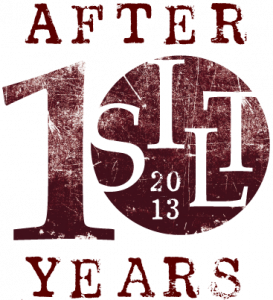 We have several main initiatives. The Spring Institute for Lived Theology is an annual institute for theologians, scholars, and practitioners focused on issues of faith and social practice. Past SILT themes include social hope, the built environment, the language of peace, Civil Rights leader John M. Perkins, migration and the borderlands, and the enterprise of lived theology itself. The most recent SILT, held at U.Va. in May, celebrated ten years of spring institutes and furthered a book project that will share the enterprise of lived theology with a broader audience.
We have several main initiatives. The Spring Institute for Lived Theology is an annual institute for theologians, scholars, and practitioners focused on issues of faith and social practice. Past SILT themes include social hope, the built environment, the language of peace, Civil Rights leader John M. Perkins, migration and the borderlands, and the enterprise of lived theology itself. The most recent SILT, held at U.Va. in May, celebrated ten years of spring institutes and furthered a book project that will share the enterprise of lived theology with a broader audience.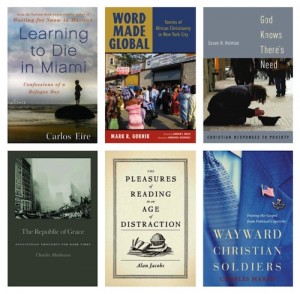 The Virginia Seminar in Lived Theology supports theologians, scholars, and practitioners in writing single-authored books on theology and lived experience. Seminar members receive research funding and meet yearly to engage in creative and fruitful exchange. One of the distinctive features of the Virginia Seminar is that it brings together scholars who have primarily written for an academic audience and those writers and scholars who have made their mark writing for more popular, general audiences. Virginia Seminar books aim to be intellectually sophisticated yet accessible to a broad audience.
The Virginia Seminar in Lived Theology supports theologians, scholars, and practitioners in writing single-authored books on theology and lived experience. Seminar members receive research funding and meet yearly to engage in creative and fruitful exchange. One of the distinctive features of the Virginia Seminar is that it brings together scholars who have primarily written for an academic audience and those writers and scholars who have made their mark writing for more popular, general audiences. Virginia Seminar books aim to be intellectually sophisticated yet accessible to a broad audience.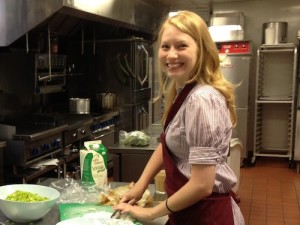 The Summer Internship in Lived Theology supports two or three U.Va. students annually in a summer immersion experience designed to foster reflection on service as a theological activity. Students design and propose internships with established service organizations, and selected interns are matched with a theological mentor with whom they craft a reading list for the summer. Interns blog in conversation with their site experiences, readings, and conversations with mentors, and in the fall, interns present their reflections on the experiences as a whole at an event on Grounds.
The Summer Internship in Lived Theology supports two or three U.Va. students annually in a summer immersion experience designed to foster reflection on service as a theological activity. Students design and propose internships with established service organizations, and selected interns are matched with a theological mentor with whom they craft a reading list for the summer. Interns blog in conversation with their site experiences, readings, and conversations with mentors, and in the fall, interns present their reflections on the experiences as a whole at an event on Grounds.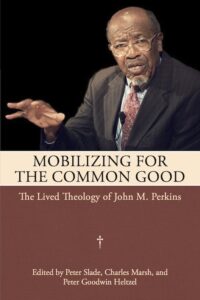 As a research community, the Project produces a wide range of resources. Several of our Spring Institutes have produced books, including Mobilizing for the Common Good: The Lived Theology of John M. Perkins and Religion and Politics in America’s Borderlands, both recently published. A book from the 2011 and 2013 SILTs is also underway. More book listings, as well as a collection of articles, audio files, videos, photos, and presentations can be found on our website.
As a research community, the Project produces a wide range of resources. Several of our Spring Institutes have produced books, including Mobilizing for the Common Good: The Lived Theology of John M. Perkins and Religion and Politics in America’s Borderlands, both recently published. A book from the 2011 and 2013 SILTs is also underway. More book listings, as well as a collection of articles, audio files, videos, photos, and presentations can be found on our website.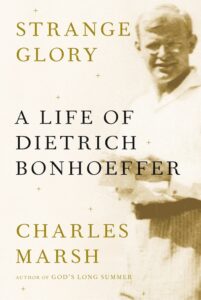 Project executive director, Charles Marsh, is teaching a course this fall entitled Kingdom of God in America. The course examines the influence of theological ideas on social movements in twentieth and twenty-first century America. Its primary historical focus is the American Civil Rights Movement of the 1950’s and 60’s but will also explore the student movements of the late 1960’s and a variety of faith-based social movements of recent decades. Professor Marsh’s forthcoming book, Strange Glory: A Life of Dietrich Bonhoeffer, is scheduled for release on April 22.
Project executive director, Charles Marsh, is teaching a course this fall entitled Kingdom of God in America. The course examines the influence of theological ideas on social movements in twentieth and twenty-first century America. Its primary historical focus is the American Civil Rights Movement of the 1950’s and 60’s but will also explore the student movements of the late 1960’s and a variety of faith-based social movements of recent decades. Professor Marsh’s forthcoming book, Strange Glory: A Life of Dietrich Bonhoeffer, is scheduled for release on April 22.
